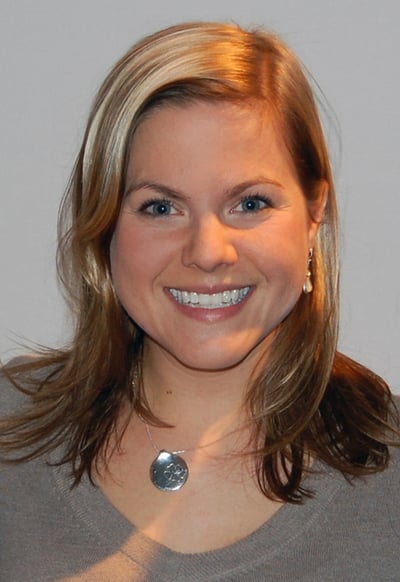Going Global
By Kerri Sparling
 By Kerri Morrone Sparling
By Kerri Morrone Sparling
My diabetes community was once limited to whom my mom knew or where our car could drive to. And growing up in a small town in America’s smallest state of Rhode Island, my access to others who had diabetes, or who even had a cursory familiarity with it, was scarce. My parents sent me to a special summer camp for kids with diabetes, but those twelve days weren’t enough to make me feel like I was part of a team.
Enter: The Internet.
The Internet has taken a vast expanse of space, time, and miles and shrunk them down so that they fit into my laptop. The whole world exists within the confines of glass screens and cables, and it’s shoved into a space so small I can bring it with me wherever I’d like.
But sometimes the people in the Internet get OUT. And last month, at the European Association for the Study of Diabetes (EASD) meeting in Berlin, Germany, I had the amazing opportunity to meet some of the global diabetes community. Thanks to a summit assembled and funded by Animas Corporation, two dozen European diabetes bloggers, advocates, and community managers met and connected in person, turning pixels into people and fonts into friendships.
I was nervous about meeting all of these people, mainly because I don’t speak a second language (English is the only one I’ve made any sense of, so far). Many of my fellow advocates were bilingual or even multilingual. “I don’t speak very good English,” one of my German counterparts said over dinner, and I had to reply, “Your English is amazing, especially since I don’t speak ANY German at all.”
But what amazed me was how universal the language of diabetes is. One beep from a glucose monitor turned a dozen heads, almost like we weren’t used to seeing them outside of our own intimate use, but the connection was instant.
“I didn’t bolus enough for breakfast,” a girl from the UK said, almost to herself. A gentleman from Italy piped up: “I didn’t, either. But I’m doing it now!” They both reached for their pumps almost simultaneously.
The energy in the room was amazing. Diabetes, as a unifying force! People talking about hypoglycemic events they experienced in the middle of the night, or ones that made them feel terrified. People talked about what their greatest fear related to diabetes is, or how it affects their family and their home life. We weren’t entirely sure of one another’s first names without the help of name tags, but we shared information with one another that our closest friends and family may not have known. A woman from Australia shared what, to me, summed up the whole experience with what she affectionately dubbed as her “beanbag story.”
“I want to connect with people who ‘get it’; people who I don’t need to explain things to; people who don’t judge me. Your stories are my stories and vice versa. One tale that always comes to mind is from when my daughter was a newborn. I had two moms’ groups: one of women in my local area who all had babies around the same time and a second that I set up, which was made up of other women with type 1 diabetes. At my non-diabetes group, I mentioned that I breastfed my daughter whilst sitting in a beanbag because if I went low she wouldn’t have so far to fall/roll. I’d explained about diabetes so they wouldn’t think I was just plain clumsy, but this was still met with looks of horror and bad-mommy judgments. When I said the same thing at my diabetes-mommy group, they all nodded, said they did similar things, like cushions on the floor, and then we all talked about the best hypo treatment to catch the fast-falling breastfeeding hypos.”
The Internet has made the world of diabetes very small. Online communities are bringing people together in ways I couldn’t have ever anticipated, back when I was diagnosed. (And the Internet didn’t exist when I was a kid, so there’s that.) Diabetes has even gone mobile, offering connections through smartphones and apps that were once limited to the confines of coffee meet-ups and support groups. Web-based versions of coffee house meet-ups are happening in real-time through Google+ hangouts and Skype chats, or through micro-blogging mediums like Twitter chats and Facebook threads. We’re connecting, as a community, both online and off, and the effect on our emotional and physical health is tremendously positive. That’s what made this global meet up so powerful for me. Thousands of miles away from the place that I call home, these people became an instant and extended family, a fact rooted in common experiences and unleashed by the Internet.
Diabetes doesn’t sleep. Thankfully, neither does the web. Funny what influential friendships can develop from just a few lines of coding.








